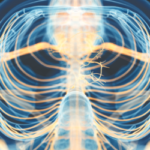PHILADELPHIA—Activation of innate immunity can be a double-edged sword. In most cases of infection or injury, cytokine production leads to recovery and protection against further tissue damage. But the production of cytokines can go awry, as is seen in proinflammatory disease. What triggers this dysregulation of the inflammatory response? We may be getting close to decoding the mystery.
In the last decade, discoveries in animal as well as human models of inflammation have led to new constructs about the interconnectedness of the central nervous system (CNS) and the immune system. As a result, said Kevin J. Tracey, MD, director and chief executive of the Feinstein Institute for Medical Research in Manhasset, N.Y., “the immune system can no longer be regarded as autonomous.”
Dr. Tracey’s opening remark encapsulated the theme for three talks presented at the session, “Neuroimmunology Signaling Cross-Talk,” here at the 2009 ACR/ARHP Annual Scientific Meeting. [Note: This session was recorded and is available via ACR SessionSelect at www.rheumatology.org.] He and his fellow presenters summarized their investigations that have expanded our understanding of the pro- and antiinflammatory pathways. The potential now exists, they said, to block the proinflammatory process with novel therapeutic approaches.
Motor Arm of Antiinflammatory Pathway
“We’ve known for many years that the nervous system senses cytokines,” said Dr. Tracey, who opened the session. “What both infectious disease and sterile injury have in common is that they both can release molecules that signal the activation of innate immunity through highly conserved endogenous inherited receptors.” Inflammatory mediators activate the nervous system by flowing through the bloodstream and leaking through the blood–brain barrier or by local production of cytokines in the brain. In the last decade, discoveries in the labs of Dr. Tracey and other investigators have revealed a third route by which inflammatory mediators can activate the nervous system: the vagus nerve. Via the neurotransmitter acetylcholine, the vagus nerve allows the brain to communicate with the immune system in “real time.” The cholinergic antiinflammatory pathway functions as the “motor arm” of innate immunity, said Dr. Tracey, who is credited with its discovery.
His laboratory’s findings had their beginnings in studies conducted by Linda Watkins in the late 1990s, when she caused a fever response in rats by injecting interleukin-1 into their abdomens. When she severed the vagus nerve, the rats developed no fever response. From these results, Dr. Tracey and his colleagues reasoned that perhaps there was a sensory arm of the inflammatory reflex that would predictably inhibit cytokine production. In a rat endotoxemia model, the team found that direct electrical stimulation of the vagus nerve inhibited tumor necrosis factor (TNF) synthesis in the liver and prevented the development of shock in the animals.1
Numerous studies expanded this work, including an experiment which established that electrical stimulation of the vagus nerve also significantly attenuated TNF synthesis and shock during reperfusion injury in rats.2 Another team member compared response to vagus nerve stimulation in wild type and alpha 7 knockout mice, and confirmed that the nicotinic acetylcholine receptor subunit alpha 7 is an essential regulator of inflammation.3
Another Thread
Another line of exploration was simultaneously being followed at the University of California, San Diego (UCSD). In his talk, Gary S. Firestein, MD, professor of medicine; chief of rheumatology, allergy, and immunology; and dean of translational medicine at UCSD, described the path that led him and his colleagues to related conclusions about CNS–immune system “cross-talk.” In early 2000–2003, they had begun to investigate the role of spinal adenosine in regulating peripheral inflammation. Delivering tiny amounts of adenosine receptor agonists via intrathecal catheters implanted in rats, the team was able to block skin inflammation induced by intradermal carrageenan.4 In a rat model of rheumatoid arthritis they established that peripheral inflammation is sensed by the central nervous system, which subsequently activates stress-induced kinases in the spinal cord via a TNF alpha–dependent mechanism.5 Intracellular p38 MAP kinase signaling processes this information and modulates the body’s inflammatory responses.
When Dr. Firestein and his team became aware of Dr. Tracey’s work, they traveled to his laboratory to try to connect these two narratives of CNS–immune system communication. Initial collaborative experiments focused on measuring whether administration of galanthamine, an acetylcholine esterase inhibitor, would alter vagal outflow—and when it did increase outflow, then applying this to their adjuvant arthritis model. Animals treated with saline after paw carrageenan injection showed swelling, whereas animals treated with galanthamine had little swelling. They showed similar antiinflammatory results when they blocked p38 intrathecally. The UCSD group was also interested in focusing on acetylcholine receptors in synoviocytes. “We, being no fools,” quipped Dr. Firestein, “decided to leverage our collaborators’ experience and focused on the alpha 7 receptor.” And, indeed, the team found that alpha 7 is constituitively expressed in both RA and OA synoviocytes.
Dr. Firestein concluded, “We started out looking at how spinal p38 regulates arthritis, and then found subsequently that it also regulates vagal outflow. There is a very dynamic interaction between the periphery sensing damage, relaying that information to the spinal cord, which subsequently provides information further north in the neural axis, and then provides a feedback loop back out to the periphery.”
Implications for RA Therapies
Understanding the pathways and mediators by which CNS–immune system “cross-talk” occurs can open possibilities for novel therapeutics, noted Paul-Peter Tak, MD, PhD, of the Academic Medical Center a the University of Amsterdam, The Netherlands, in his talk. He and his colleagues have augmented the work done by the Tracey and Firestein teams. For example, they cultured fibroblast-like synoviocytes from the joints of patients with active RA, stimulated the cells with TNF-α, and added nicotine, which stimulates the alpha 7 receptor, thus confirming that the alpha 7 receptor is expressed in the synovium.6 They also showed, in a collagen-induced rat model, that the cholinergic antiinflammatory pathway is involved in synovial inflammation in vivo.7 It is clear that the cholinergic antiinflammatory pathway allows the nervous system to communicate with the immune system. We now have converging scientific evidence that the autonomic nervous system plays a key role in regulating the magnitude of immune responses to inflammatory stimuli—in real time.
How do we take this knowledge forward to make a difference for patients with RA, nearly half of whom, asked Dr. Tak, are currently suffering from active disease? The bottom line, according to all three researchers, is to acknowledge this new view of the immune system. “Before, we tended to think about immunity as a distributed, non-innervated network that functions autonomously,” said Dr. Tracey. The immune system must now be regarded as an “innervated organ,” in his words, and that innervation occurs through a hard-wired network. The bonus reaped from in vivo studies is that we now better understand how the nervous system is sensing and responding to inflammatory mediators. This knowledge can lead to development of logical therapeutic targets to down-regulate the inflammatory process. Dr. Tracey and his colleagues are investigating the utility of vagal nerve stimulation. Some alpha 7 agonists could perhaps selectively deliver the right message to down-regulate the proinflammatory process and ongoing investigations are also showing some promise for the use of such mind–body techniques as paced breathing for the same purpose.8
Whatever the method, targeted therapeutics will be the wave of the future, helped by the kind of “cross-talk” and cross-fertilization demonstrated by these three investigators.
Gretchen Henkel is a medical journalist based in California.
References
- Borovikova LF, Ivanova S, Zhang M, et al. Vagus nerve stimulation attenuates the systemic inflammatory response to endotoxin. Nature. 2000;405:458-462.
- Bernik TR, Friedman SG, Ochani M, et al. Cholinergic anti-inflammatory pathway inhibition of TNF during ischemia reperfusion. J Vasc Surg. 2002;36: 1231-1236.
- Wang H, Yu M, Ochani M, et al. Nicotinic acetylcholine receptor alpha7 subunit is an essential regulator of inflammation. Nature. 2003;421:384-388.
- Sorkin LS, Moore J, Boyle DL, et al. Regulation of peripheral inflammation by spinal adenosine: role of somatic afferent fibers. Exp Neurol. 2003;184:162-168.
- Boyle DL, Moore J, et al. Spinal adenosine receptor activation inhibits inflammation and joint destruction in rat adjuvant-induced arthritis. Arthritis Rheum. 2002;46:3076-3082.
- van Maanen MA, Stoof SP, et al. The alpha7 nicotinic acetylcholine receptor on fibroblast-like synoviocytes and in synovial tissue from rheumatoid arthritis patients: A possible role for a key neurotransmitter in synovial inflammation. Arthritis Rheum. 2009;60:1272-1281.
- van Maanen MA, Lebre MC, van der Poll T, et al. Stimulation of nicotinic acetylcholine receptors attenuates collagen-induced arthritis in mice. Arthritis Rheum. 2009;60:114-122.
- Marsland AL, Gianaros PJ, Prather AA, et al. Stimulated production of proinflammatory cytokines covaries inversely with heart rate variability. Psychosomatic Med. 2007; 69:709-716.


